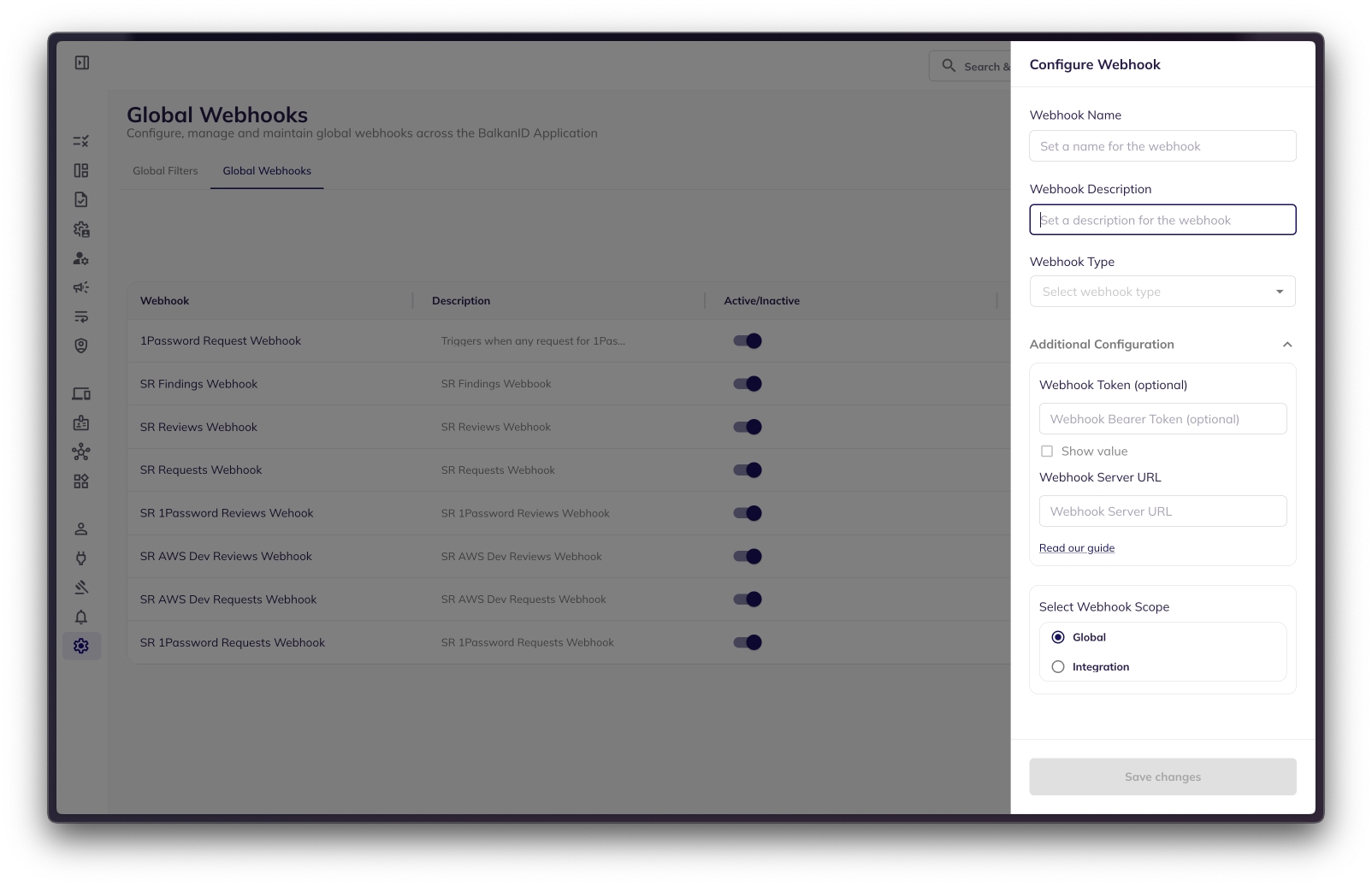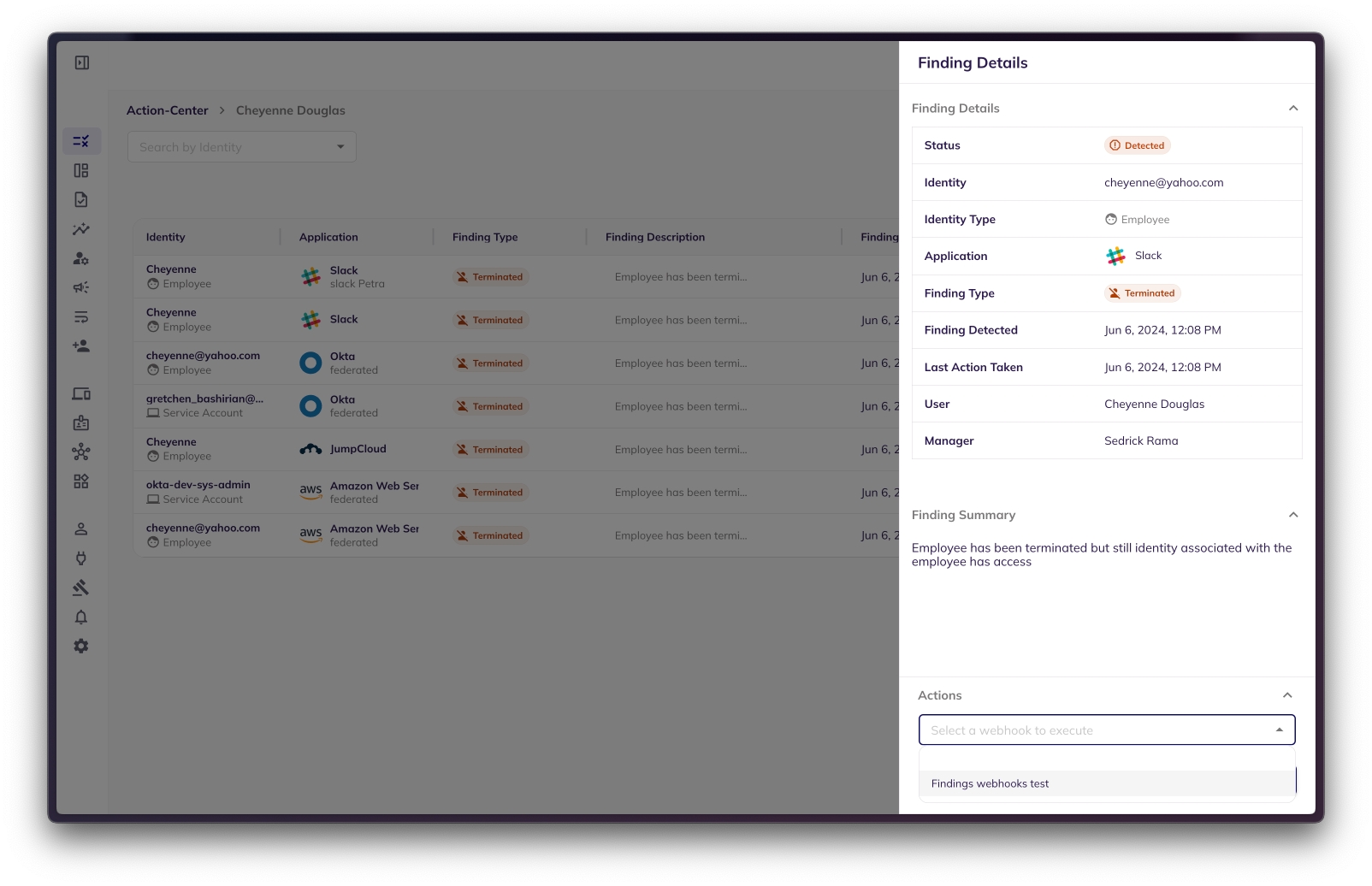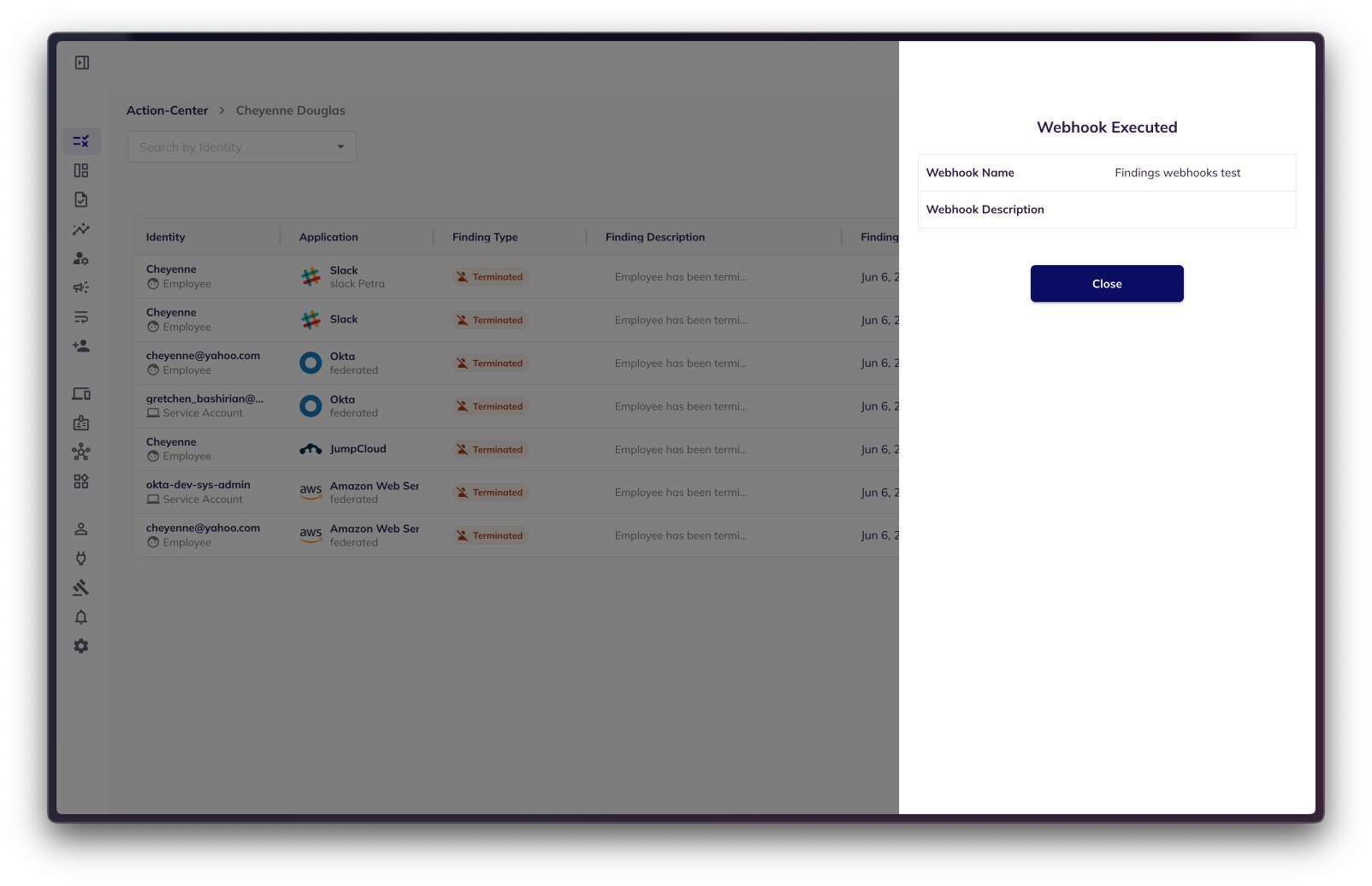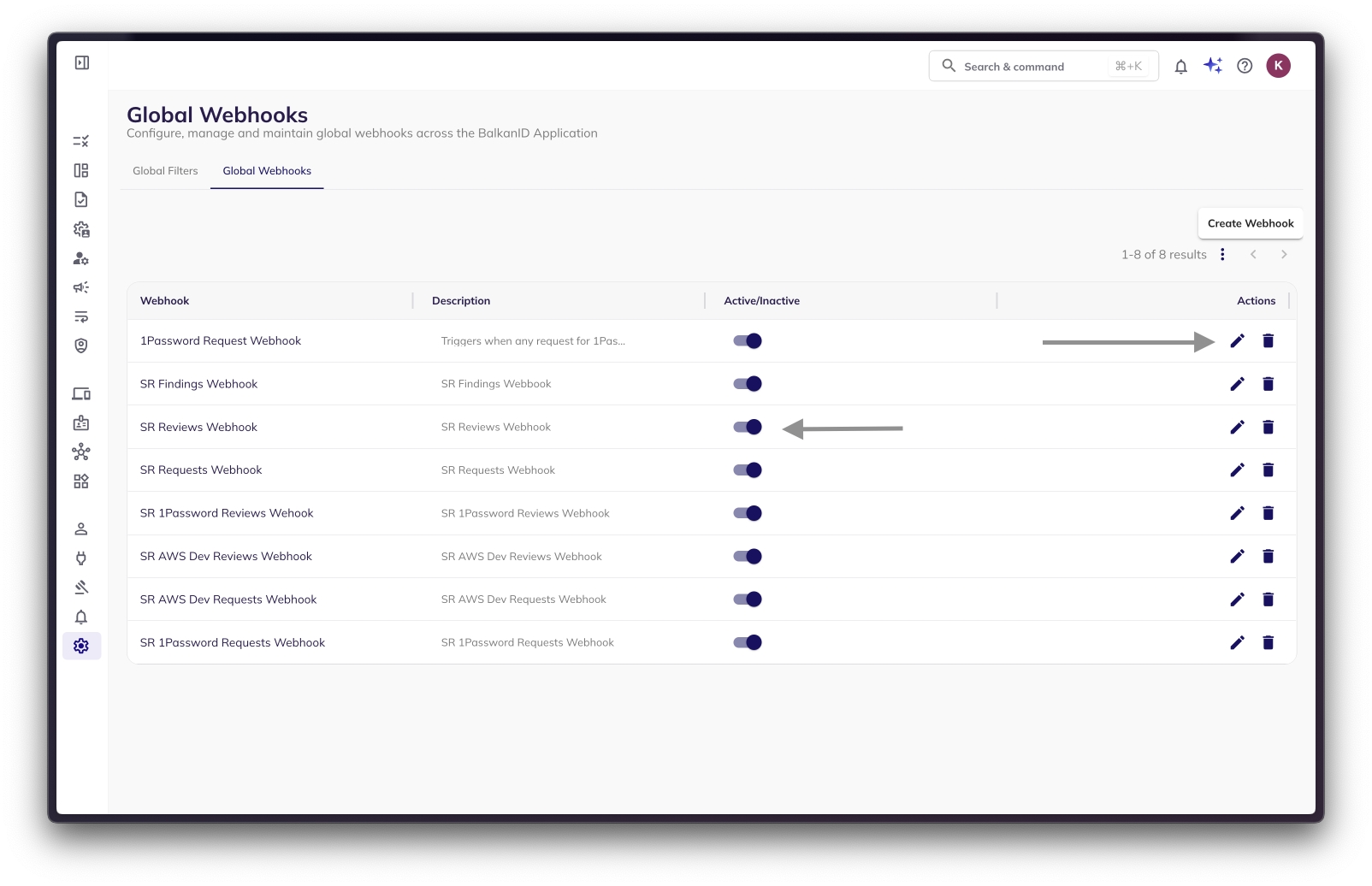Configuring global webhooks
Introduction
BalkanID offers a robust and seamless way to set-up, configure and send data to external webhooks. There are two kinds of webhooks that BalkanID supports, namely - global webhooks and integration specific webhooks. Configuring global webhooks is a fairly straightforward and easy process, designed to enhance system functionality and versatility on per application integration basis. By following a simple setup process, you can effortlessly set up, edit, and utilize global webhooks, ensuring smooth execution and efficient handling of webhook interactions.
Note: To enable webhooks for your account, please contact Customer Support.
To configure global webhook within your tenant
1. Go to Global Settings > Global Webhooks tab on your BalkanID tenant.

2. You will need to enter the following fields:
Name of the webhook
Description of the webhook
Webhook Type: A webhook can be one of three types - Finding, Request, Review. Set up the type of webhook this will be.
Webhook Configuration: Provide an authentication token, if required, and the Server URL that should receive data when the webhook is invoked.
Once you hit save, the webhook can be used within the action types for an integration the webhook was associated with.

Executing Webhooks
You can execute a pre-configured webhook against any item in BalkanID. For instance, to execute a webhook against a finding, just select the webhook to run and execute it.




Editing and Enabling/Disabling Webhooks
Global webhooks (just like global playbooks) can be enabled/disabled at the global level. To do enable/disable a webhook, just toggle between active/inactive. If active, then the webhook will show up under the associated type/section to be executed.

Editing the global webhook is as simple as selecting the edit icon against the webhook to edit in the Global settings > Global webhooks page.
Voilà, all set! You will new start receiving data from BalkanID to your webhook when any event takes place in the system.
Note: While the Webhook Authentication Token is an optional field, BalkanID recommends to set up an authentication token for your webhook for security reasons while transmitting information over the Internet.
Was this helpful?

